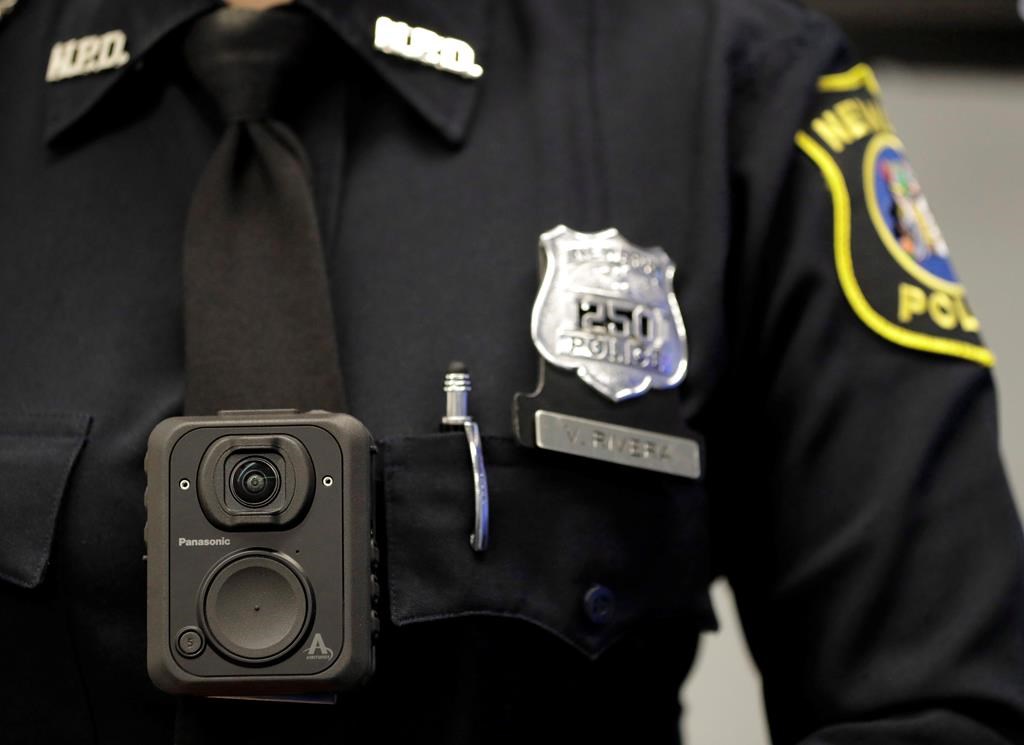Police in St. Thomas, Ont., will be launching a pilot project to look into the use of body-worn cameras as part of officers’ daily uniforms.

At Wednesday’s St. Thomas Police Services Board meeting, the board made the decision to move forward with the research, starting with the pilot project in partnership with Axon and its subsidiary, Axon Public Safety Canada Inc. The force says Axon is also its current supplier of Tasers.
The decision comes amid mounting public pressure across North America to push for increased accountability and transparency among police, as well as pushes to defund police and redirect funds into social services. The groundswell of support for changes to policing stems, in large part, from rallies and protests against police brutality and anti-Black racism sparked by the death of George Floyd in the United States.
While body cameras are not widely used in Canada currently, advocates and policy experts have mixed reviews on how effective they’d be if deployed more extensively.
Advocates suggest the cameras would help to “enhance” trust in law enforcement and could deter bad behaviour while other experts point to studies that suggest very little impact on police use of force and that the cameras serve as an investment “in a system that’s violent and racist.”

“The St. Thomas Police Services Board supports building public trust, community support and enhancing officer safety and public safety. This is an example of our clear commitment to ensuring we have an accountable police service to those who they serve,” says board chair Dave Warden.
St. Thomas police say the pilot “is set to begin in the near future,” but details including how many cameras will be required, digital storage, management of video files, and costs involved are not yet known.
“Body-worn cameras will undoubtedly assist with improving the high-quality public service expected of police officers and enhance police accountability while at the same time increasing public trust,” said police chief Chris Herridge.
“We have come so far in developing and strengthening relationships with our community, and in my opinion, body-worn cameras will only boost our ability to improve the overall well-being of St. Thomas. We look forward to working with Axon and moving ahead as soon as possible.”
- Train goes up in flames while rolling through London, Ont. Here’s what we know
- Budget 2024 failed to spark ‘political reboot’ for Liberals, polling suggests
- Wrong remains sent to ‘exhausted’ Canadian family after death on Cuba vacation
- Peel police chief met Sri Lankan officer a court says ‘participated’ in torture
Racial profiling and racial discrimination against Black people is a systemic problem in Canada, according to numerous reports and experts.
Black Canadians account for 3.5 per cent of the country’s total population, according to the latest government statistics, but are over-represented in federal prisons by more than 300 per cent, as found by the John Howard Society.
A Black person is nearly 20 times more likely than a white person to be involved in a fatal shooting by Toronto police, a 2018 report by the Ontario Human Rights Commission found, and Black Canadians are more likely to experience inappropriate or unjustified searches during encounters and unnecessary charges or arrests. They’re also more likely to be held overnight by police than white people.
Black Canadians experience disparities in health outcomes compared to the population at large, and studies show they often face barriers and discrimination within health-care systems. Black people report higher rates of diabetes and hypertension compared to white people, which researchers say may stem from experiences of racism in everyday life.
Indigenous Peoples, who represent about five per cent of the population in Canada, also experience poorer health outcomes and face discrimination within health-care systems and by police. According to Statistics Canada, they are grossly over-represented in the prison system — Indigenous men made up 28 per cent of male admissions to custody in 2017-18 — and, according to the John Howard Society, are nearly eight times more likely to be murdered. According to the Canadian Department of Justice, Indigenous women and girls are more than three times more likely to experience sexual assault and violence and are between six and 12 times more likely to be killed, depending on the province or territory.
–With files from Beatrice Britneff








Comments